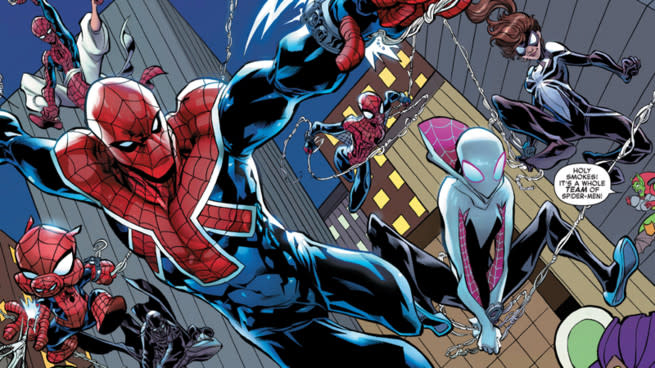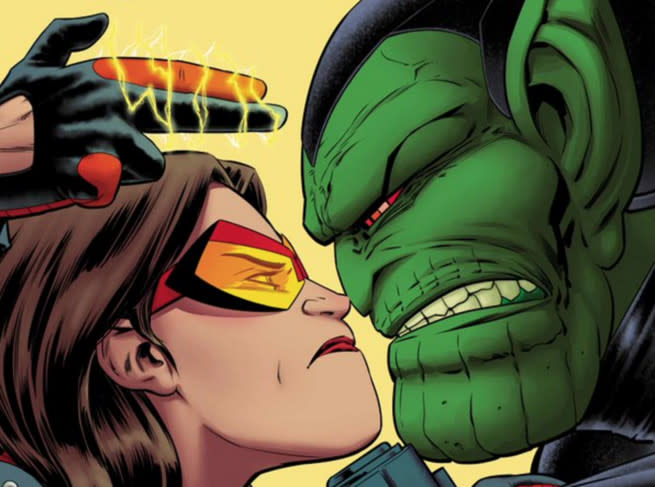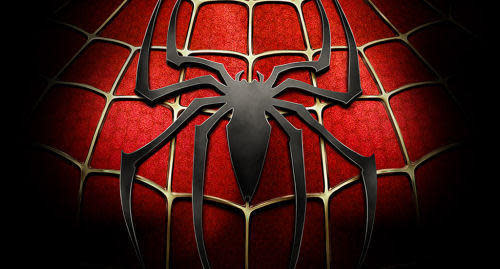Spider-Man No More! The All-New, All-Different Wave of Spider-People

Spider-Man #1 debuted last month, but with a new face on the cover. That face is of Miles Morales, one of the breakout stars of Marvel Comics over the past ten years and a standard bearer of changes sweeping the publisher’s line of superheroes. His inclusion alongside Peter Parker in Marvel’s collection of Spider-books is just one example of the many adjustments being made to the Spider-brand.
At the peak of comics sales and circulation in the 1990s (specifically 1995), Marvel was soliciting 6 ongoing titles featuring the Spider-Man brand and even more mini-series. This included Amazing Spider-Man, Web of Spider-Man, Spider-Man, Spider-Man Unlimited, Untold Tales of Spider-man and Peter Parker, The Spectacular Spider-Man. There are just about as many series in publication as of this week, but there is one key difference in this 20 year jump in time. In 1995 all of the titles featured Peter Parker as the hero behind the mask. Today only 2 of the 6 ongoing titles do so.
Those two titles are The Amazing Spider-Man and Spidey. The former, written by longtime Spidey scribe Dan Slott, focuses on the current, continuity-focused adventures of the wall crawler created by Steve Ditko and Stan Lee in Amazing Fantasy #15. It’s a comic that is radically removed from the character’s origins though. Rather than featuring Peter as a down on his luck, superpowered teen, it shows him as a successful, if absent minded, entrepreneur and beloved hero.
The other title still focusing on Peter Parker refocuses on the those long gone high school origins in the pages of Spidey. While there’s little that separates this series from the still enjoyed and printed Ultimate Spider-Man, it provides an outlet for fans seeking the status quo Parker has left behind. It’s a kid-friendly introduction to the character that allows retailers to sell the familiar and timeless angle of a teenager learning the lessons of great power.
It is definitely not the only series providing this angle though. The debut of Spider-Man #1 combines both the continuity-based importance of Amazing Spider-Man with the core themes and motifs of the character that fans have come to expect. Only this time the young man behind the mask isn’t Peter Parker.

Miles Morales debuted in the pages of Ultimate Fallout #4 following the death of Peter Parker in the Ultimate universe. He assumed the role of Spider-Man and replaced Peter in the stories to come, and stole headlines in the real world. Many pundits were shocked that Spider-Man was now a young Afro-Latin American person. Despite outcrys from some, the character was embraced and quickly discovered a loyal following. He continued to be the only Spider-Man of the Ultimate Marvel universe (excluding a visit from the mainstream universe’s Peter) until it was brought to a conclusion with Secret Wars in 2015.
That wasn’t the end of Miles’ story though. One of the most significant changes wrought by Secret Wars was to bring Miles into the core of the Marvel universe. Instead of being a replacement Spider-Man in a secondary continuity, he was made a Spider-Man of Marvel’s base set of stories. While Peter Parker may still be around, he is now a member of the core Avenger’s title All-New Avengers, and has his own series. This new status quo distinguishes Miles as a character important to the Marvel brand as well as fans.

Miles Morales isn't the only Spider-person being given their own series. There are currently three other Spider-centric titles being published on an ongoing basis. Spider-Woman may have received the most critical acclaim of the entire line thus far. It is telling the story of Jessica Drew, who first appeared in 1977’s Marvel Spotlight #32, as she handles her first pregnancy. The series is focused on the experience of writer Dennis Hopeless and his wife’s recent children. Mothers who have read and written about the series have mentioned how the emotional, comedic, and mundane qualities of the series all represent their own lives in surprising ways. Despite the inclusion of Skrulls and C-list villains, the series has kept its focus on the changes having a child has one someone’s life.
Spider-Gwen has remained popular since her introduction in Edge of Spider-Verse #2 in 2014, and she has begun her second series in the wake of Secret Wars. Unlike Peter, Miles, and Jessica, this version of Gwen Stacy remains primarily within her own alternate universe, while the Gwen Stacy of the prime Marvel universe remains dead. The core creative team of the series has not altered since her introduction though, and they continue to tell stories involving the Lizard serum, guilt over a dead Peter Parker, and lots of new takes on classic Marvel heroes.
The final Spider-book doesn’t star a single titular hero, but an ensemble in the form of Web Warriors. Spinning out of the popularity of Dan Slott’s “Spider-Verse” event, this series takes a multiversal perspective of Marvel continuity by pulling heroes and villains together from across a wide variety of different timelines. Amongst those included are a future Peter’s daughter May “Mayday” Parker, the Spider-Man of India Paviitr Prabhakar, and the latina Spider-Girl formerly known as Araña. It is a diverse group facing big problems together.

Looking back at the past twenty years of pop cultures, one thing is clear: Spider-Man is as popular as ever. There are just as many Spider-books being published today as there were during the comics bubble of the 1990s. In the meantime, there have been 5 live action Spider-Man films, a bevy of animated series, and plenty of future plans made on both fronts. People love Spider-Man today just as much as they loved him 20 years ago and are likely to love him 20 years from now.
The difference lies in what Spider-Man means today. In 1995 Spider-Man was a single person, Peter Parker. While Mr. Parker is still Spider-Man, he’s not the only person associated with that title. The growing fanbases for characters like Miles Morales, Jessica Drew, and Gwen Stacy mark him as the first amongst equals. This doesn’t diminish the character of Peter Parker, but reveals the significance and power of his story.
The story of Spider-Man appeals to readers because of the universality of its themes. It tackles the struggle of growing up, accepting responsibility, and learning one’s place in the world. That is not a narrative confined to a young, white man in New York City; it’s a narrative shared with all of humanity. This goes to explain both the popularity of Spider-Man throughout media and the embrace of new Spider-characters and Spider-books. As much as people love Peter Parker, they also want to see characters who resemble themselves. In the case of Spider-Man, there’s no reason that these new, more diverse characters cannot share powers or symbolism.
Now instead of having one Spider-person, we have dozens. Four of them have their own series, while many others share a team book, and even more introduced in “Spider-Verse” await a chance to return. The concept of Spider-Man has grown from the story of a single young man to the story of a new mother, a teenage woman, a young black man, and so many others. It continues to grow every year. Marvel has chosen to embrace this growth and the many people who seek out the story of Spider-Man both for entertainment and strength. That choice as shown in their own publishing line reflects a better, more responsible Spider-brand.


